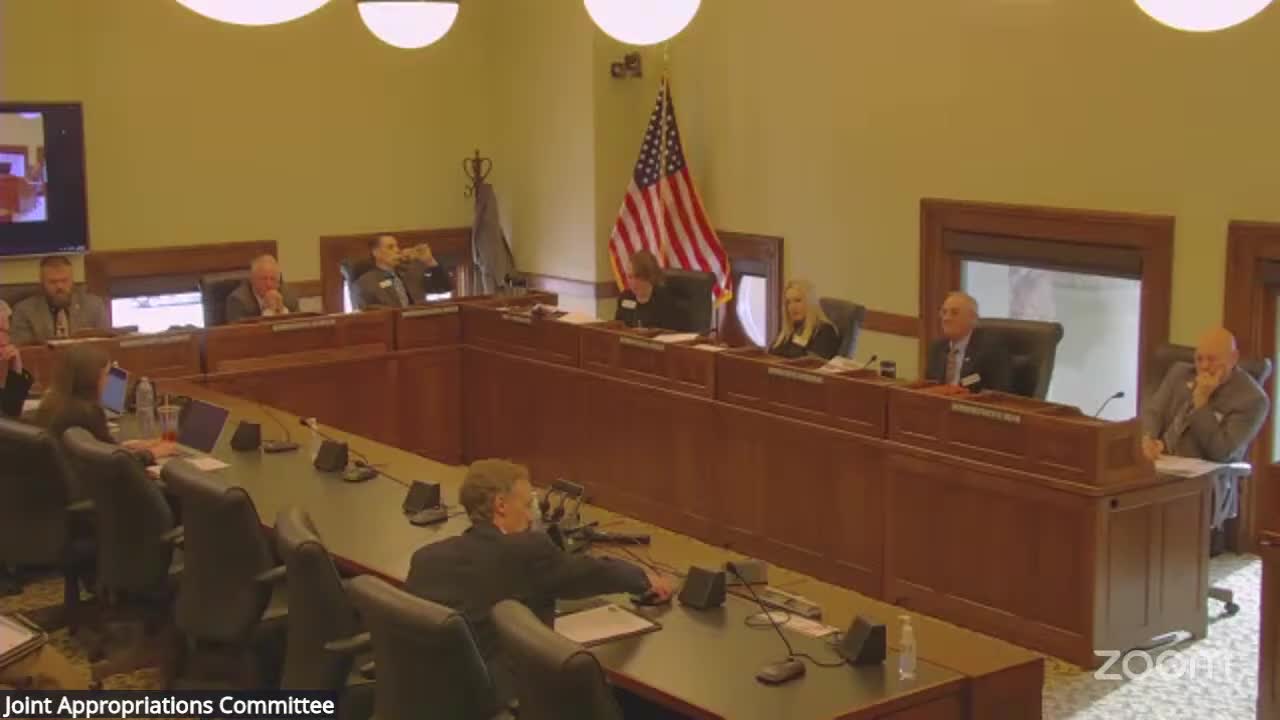Insurers tell committee home hardening, community mitigation and fuel treatments improve insurability and lower losses
November 01, 2025 | Appropriations, Joint & Standing, Committees, Legislative, Wyoming
This article was created by AI summarizing key points discussed. AI makes mistakes, so for full details and context, please refer to the video of the full meeting. Please report any errors so we can fix them. Report an error »

Representatives of the American Property Casualty Insurance Association (APCIA) told the Joint Appropriations Committee that rising wildfire losses are contributing to insurance availability and affordability challenges and that science-based mitigation can improve a home's chance of surviving wildfire and thereby reduce claims costs.
Ethan Amman and Karen Collins summarized market drivers and recommended mitigation strategies the industry supports. APCIA said wildfire losses have increased markedly over the last decade and that mitigation and community-scale measures can reduce exposure. The witnesses pointed to two third-party programs as practical models for builders and homeowners: the Insurance Institute for Business & Home Safety (IBHS) Wildfire Prepared home designation and the National Fire Protection Association's Firewise USA community approaches.
Amman cited an industry view that new homes built to wildfire-resilient standards can be constructed for a modest premium; IBHS examples showed incremental construction costs under $3,000 in one case. APCIA and IBHS materials emphasize five-foot non-combustible zones immediately adjacent to homes, non-combustible roofing and ongoing maintenance to reduce ember-ignition risk.
Panelists suggested a suite of public interventions to increase mitigation at scale: grants and low-interest loan programs for mitigation projects; rebates or permit-fee reductions for resilient construction; tax credits or sales-tax exemptions for mitigation materials; and stronger building codes or land-use planning in high-risk areas. They also highlighted the utility of homeowner and neighborhood mitigation programs to reduce ignition risk and the importance of pairing mitigation with improved response capacity.
Why this matters: Insurers said clear, science-based mitigation standards and financial incentives to implement them can make property-level risk reductions financially attractive, reduce overall claims, and, over time, improve insurance availability and affordability.
Ethan Amman and Karen Collins summarized market drivers and recommended mitigation strategies the industry supports. APCIA said wildfire losses have increased markedly over the last decade and that mitigation and community-scale measures can reduce exposure. The witnesses pointed to two third-party programs as practical models for builders and homeowners: the Insurance Institute for Business & Home Safety (IBHS) Wildfire Prepared home designation and the National Fire Protection Association's Firewise USA community approaches.
Amman cited an industry view that new homes built to wildfire-resilient standards can be constructed for a modest premium; IBHS examples showed incremental construction costs under $3,000 in one case. APCIA and IBHS materials emphasize five-foot non-combustible zones immediately adjacent to homes, non-combustible roofing and ongoing maintenance to reduce ember-ignition risk.
Panelists suggested a suite of public interventions to increase mitigation at scale: grants and low-interest loan programs for mitigation projects; rebates or permit-fee reductions for resilient construction; tax credits or sales-tax exemptions for mitigation materials; and stronger building codes or land-use planning in high-risk areas. They also highlighted the utility of homeowner and neighborhood mitigation programs to reduce ignition risk and the importance of pairing mitigation with improved response capacity.
Why this matters: Insurers said clear, science-based mitigation standards and financial incentives to implement them can make property-level risk reductions financially attractive, reduce overall claims, and, over time, improve insurance availability and affordability.
View full meeting
This article is based on a recent meeting—watch the full video and explore the complete transcript for deeper insights into the discussion.
View full meeting